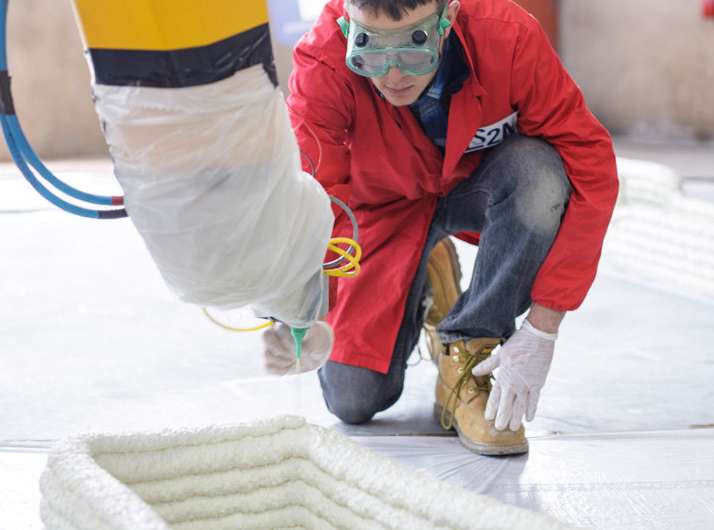July 10, 2018 weblog
How Nantes team's 3-D printing may alter shape of homes to come

For some months now, a 3D printed house in Nantes has drawn lots of attention, not just because a printer was involved but also because it went up from start to finish so quickly (54 hours to print, then add some more time for the windows and roof). Interesting Engineering said it took some more time to add the roof, windows and doors.
A robot printer was used to print layers from the floor upwards to form the walls, and videos show a beautiful result of five rooms with rounded walls.
Now comes the latest news of the world's first family to move into a 3D-printed home—that is now home for the Ramdani family, consisting of the two parents and their 3 children, to enjoy life in the 4-bedroom house in Nantes, France.
The innovator behind this is project leader Benoit Furet, a professor at Nantes University. In a BBC report, Furet discussed costs.
BBC's Michael Cowan went through the figures posed by Furet. "He thinks that in five years they will reduce the cost of the construction of such houses by 25% while adhering to building regulations, and by 40% in 10 to 15 years."
Reasons why 3D printed house prices will go down are that the technology will undergo refinements, and one can expect economies of scale as more houses are built.
The 1,022 square feet house was built to curve around the 100-year-old protected trees on the plot, Cowan wrote. That points to a key advantage in using 3D printing for construction—far richer solutions in shape, and a creative experience opens up for architects to think outside the "box" of straight walls and cookie-cutter boxed rooms that one sees in traditional constructs.
The present-day limits are especially glaring in traditional public housing. Residents' units look more like confined prison cells blocking out the natural outdoors, minus only the bars on windows.
The project leader said that 3D printing enabled richer solutions in terms of the shape of the house, with more interesting possibilities for architects then working with straight walls.
Curves are not only pleasing to the eye but also have practical advantages. "The curve also improves the home's air circulation, reducing potential humidity and improving thermal resistance," said Cowan.
Mashable carried an especially good video that delivers on one's visual impact of what this house achieves in design and function for a family of five.
The BBC walked readers through the building process: A team of architects and scientists work on the idea and it is programmed into a 3D printer, which in turn is brought to the site of the home.
Work begins, printing in layers from the floor upwards. "Each wall consists of two layers of the insulator polyurethane, with a space in-between which is filled with cement." The walls are thick and insulated. Windows, doors, and roof are then fitted.
The house has an IoT system, as the video in Mashable showed, where the residents can control temperature and other features via tablet.
The 3D printed house has been a collaboration between the city council, a housing association and University of Nantes. From the town planning perspective, the officials are interested to see if the same housing principles might be able to be applied for other public buildings, such as sports halls. Can such efforts influence a shift in the building industry?
Time will tell. Reports said Fouret is working on a project in the north of Paris to print 18 houses and a commercial building.
More information: batiprint3d.fr/en/
© 2018 Tech Xplore



















